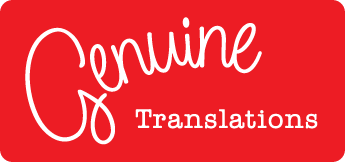Website Localisation
What is Website Localisation?
Website localisation goes beyond translation. By localising a website, we are doing a linguistic AND cultural adaptation of the website and its content to the requirements of the foreign market.
By content, we mean not only visible text, but coding, formatting, images, colours, etc.
By requirements, we mean the way other cultures communicate and engage online. For example, the Arabic and Chinese languages are written from right to left, so the formatting of your website (not only the text) needs to reflect the way users navigate. You need to look at menus, buttons, images…
Also, did you know the “thumbs up” symbol is considered offensive in the Greek culture? If your website includes images and icons, you would need expert advice on whether these need changing when localising your website for other markets.
It’s the little details that can make or break your reputation across the world.
What are the benefits?
Here we list the main benefits of having your website localised:
Benefits for website owners:
- More customers, users and products sold
- Return on investment
- Increased trust
Benefits for website users:
- A website that’s easier to understand
- Better experience
- Increased trust
How much should we localise?
There are different levels of website localisation, please see a guide below.
The level you choose ultimately depends on your company’s international growth goals, your target countries and your budget. Please contact us to discuss these and find out how we can help.
- Standardised: Same content for domestic and international audiences and users have no language choice.
- Semi-localised: Only the contact page differs between languages.
- Localised: Most content and pages are localised.
- Highly-localised: All content and site structure fully adapted and country-specific URLs.
- Culturally adapted: Total immersion in the target locale, reflecting perception, symbolism and behaviour of target audience.
Our Tip
Internationalise your website first. Then, it will be easier to localise it for other markets.
In order to internationalise your website, you will need to:
- Design the website in such a way that isolates the linguistically and culturally dependent parts of the product. For example, store code and text separately;
- Develop a system that allows for linguistic and cultural adaptation.
What’s involved in localisation?
A comprehensive localisation project usually involves the following steps:
- Analysis of original website and discussion around the level of localisation required and your expectations
- Scheduling and budgeting: What tasks are required? How long will they take? What would be the cost?
- Terminology setup: Review of existing glossaries, or creation of new ones
- Preparation of source material (the files we’ll be working with)
- Translation
- Keyword research and implementation for the target countries
- Localisation of design and graphic elements
- Quality Assurance (please check “Our process” page to find out more about our QA process)
- Testing of localised website, looking for any linguistic and functional issues
- Client review and implementation of review changes
We work closely with our clients, as some of them have their own developers involved in part of the process.
Get in touch
Our goal at Genuine Translations is helping your business thrive in other cultures. Contact us to discuss your requirements and goals.
